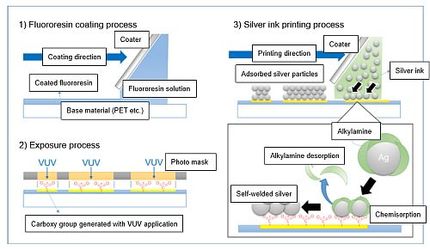New X-ray technique reveals structure of printable electronics
An innovative X-ray technique has given North Carolina State University researchers and their collaborators new insight into how organic polymers can be used in printable electronics such as transistors and solar cells. Their discoveries may lead to cheaper, more efficient printable electronic devices.
Printable electronics are created by spraying or printing inks containing conductive organic molecules onto a surface. The process is fast and much less expensive than current production techniques for items like solar cells or computer and television displays. Additionally, it holds potential for amazing new applications: picture a wearable interactive display that needs no batteries. In the solar industry, the ability to print solar cells on giant roll-to-roll printing presses – like printing a newspaper – could make the technology much more affordable and mass marketable.
NC State physicists Dr. Harald Ade and Dr. Brian Collins, in collaboration with Dr. Michael Chabinyc at the University of California Santa Barbara, wanted to know why some processing steps resulted in better and more efficient devices than others. "Manufacturers know that some materials work better than others in these devices, but it's essentially still a process of trial and error," Ade says. "We wanted to give them a way to characterize these materials so that they could see what they had and why it was working."
To do that, Collins and Ade went to Lawrence Berkeley National Laboratory's Advanced Light Source (ALS). They developed a new technique which used the powerful X-rays from the ALS to look at how individual molecules within these materials organize. They found that the best performing devices were characterized by particular molecular alignments within the materials.
"In transistors, we found that as the alignment between molecules increased, so did the performance," Collins says. "In the case of the solar cells, we discovered alignment of molecules at interfaces in the device, which may be the key to more efficient harvesting of light. For both, this was the first time anyone had been able to really look at what was happening at the molecular level."
The researchers' results appear in the journal Nature Materials. Led by NC State and UCSB, an international collaboration of researchers from Lawrence Berkeley National Laboratory, Monash University in Australia, and University Erlangen-Nuremberg in Germany contributed to the work.
"We're hoping that this technique will give researchers and manufacturers greater insight into the fundamentals of these materials," Collins says. "Understanding how these materials work can only lead to improved performance and better commercial viability."
Original publication
B. A. Collins, H. Yan, E. Gann, H. Ade, J. E. Cochran, M. L. Chabinyc, C. Hub, R. Fink, C.Wang, T. Schuettfort, C. R. McNeill; "Polarized X-ray scattering reveals non-crystalline orientational ordering in organic films"; Nature Materials.
Most read news
Original publication
B. A. Collins, H. Yan, E. Gann, H. Ade, J. E. Cochran, M. L. Chabinyc, C. Hub, R. Fink, C.Wang, T. Schuettfort, C. R. McNeill; "Polarized X-ray scattering reveals non-crystalline orientational ordering in organic films"; Nature Materials.
Other news from the department science

Get the analytics and lab tech industry in your inbox
By submitting this form you agree that LUMITOS AG will send you the newsletter(s) selected above by email. Your data will not be passed on to third parties. Your data will be stored and processed in accordance with our data protection regulations. LUMITOS may contact you by email for the purpose of advertising or market and opinion surveys. You can revoke your consent at any time without giving reasons to LUMITOS AG, Ernst-Augustin-Str. 2, 12489 Berlin, Germany or by e-mail at revoke@lumitos.com with effect for the future. In addition, each email contains a link to unsubscribe from the corresponding newsletter.





















































